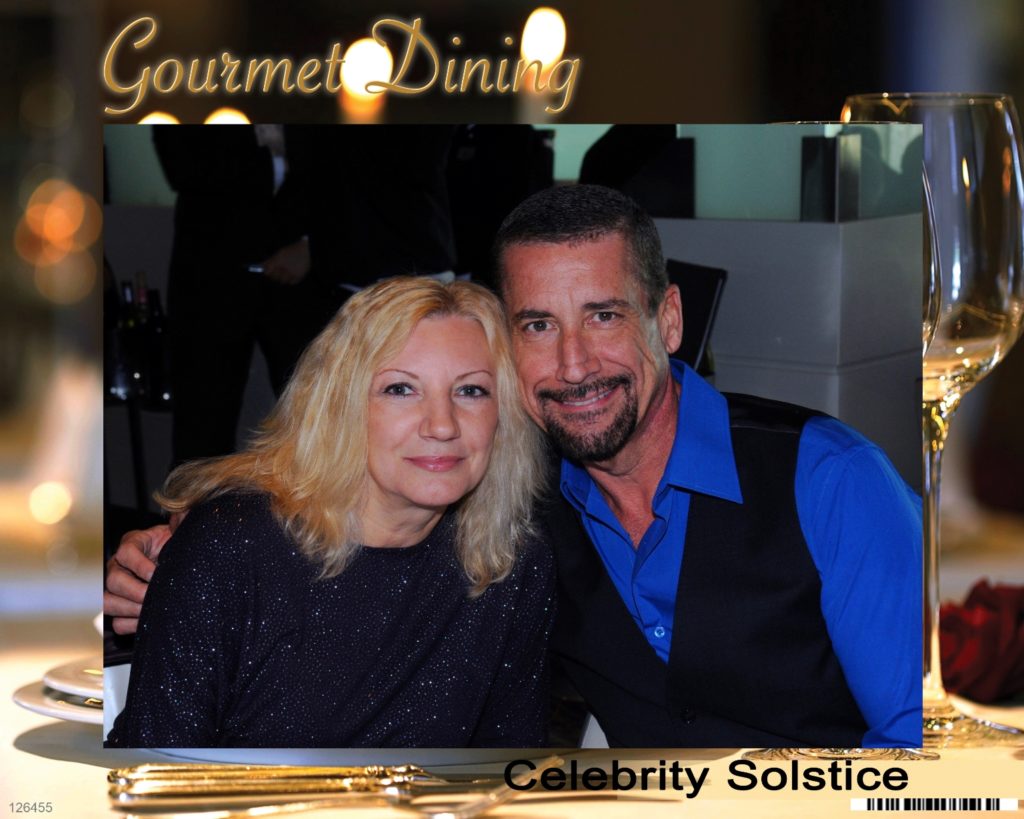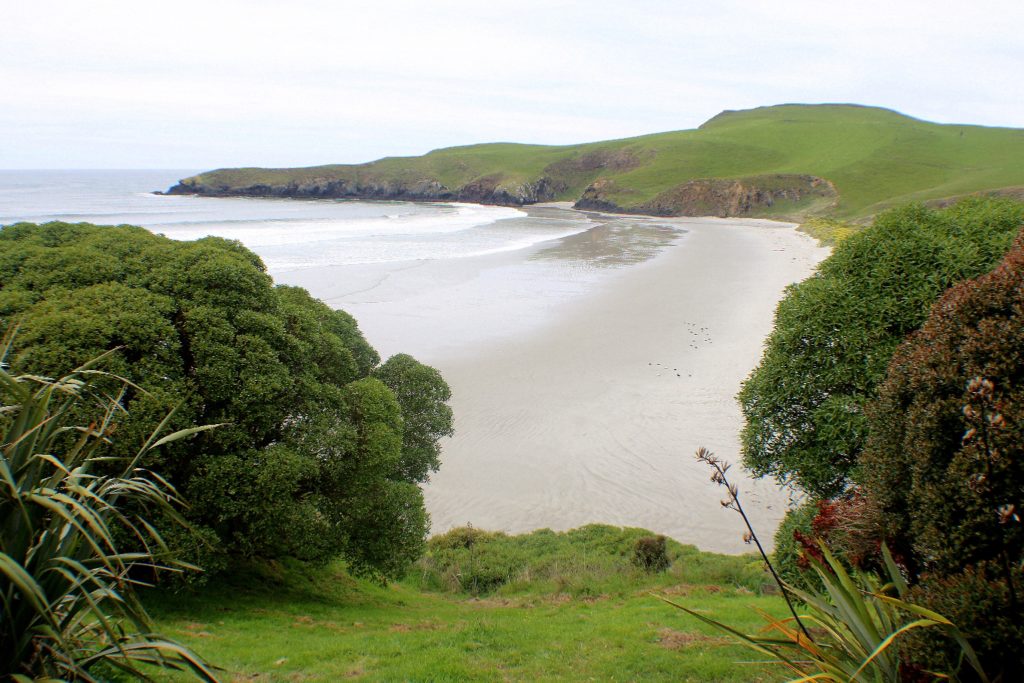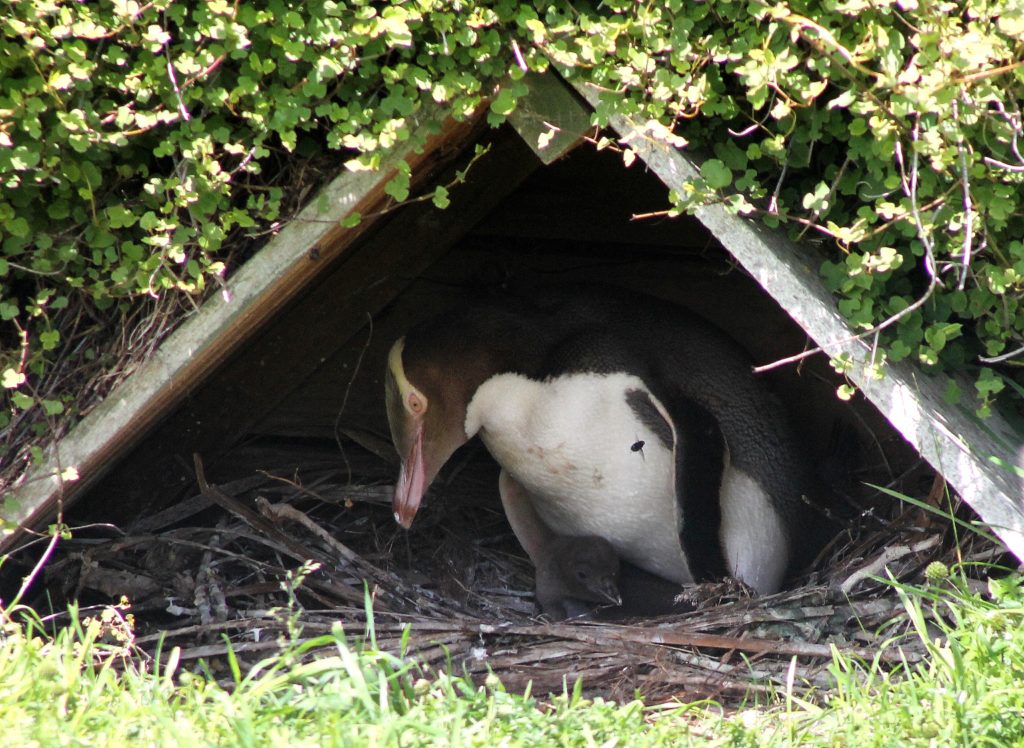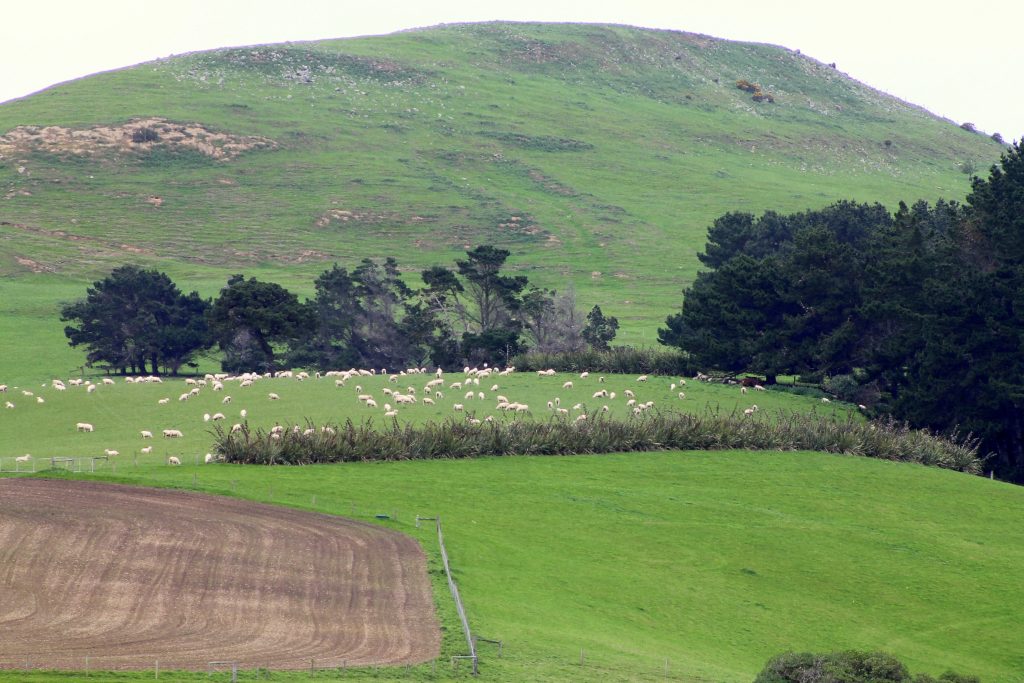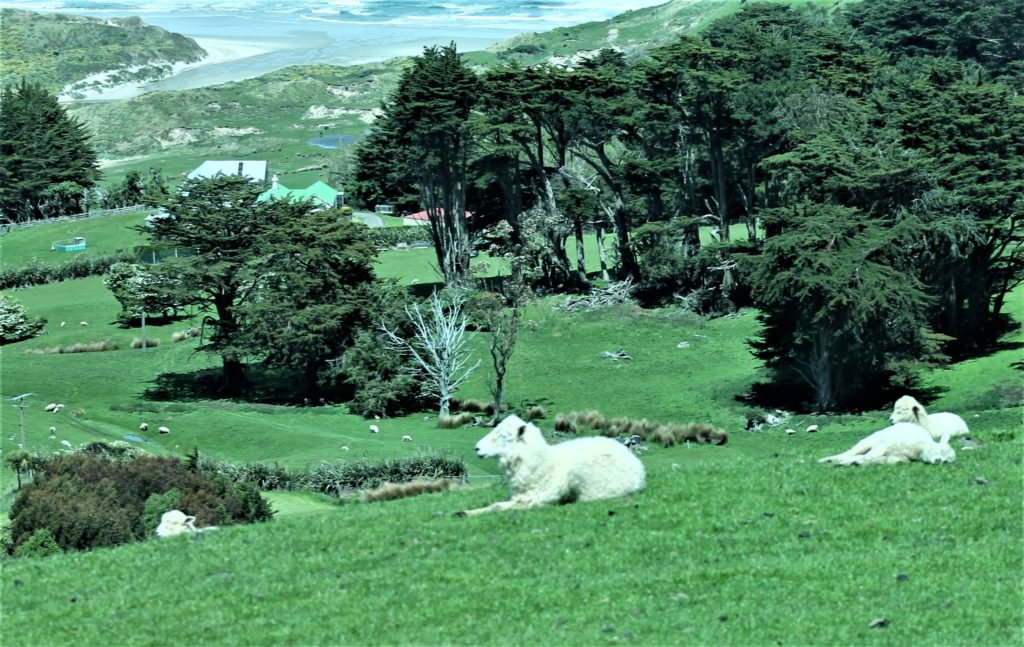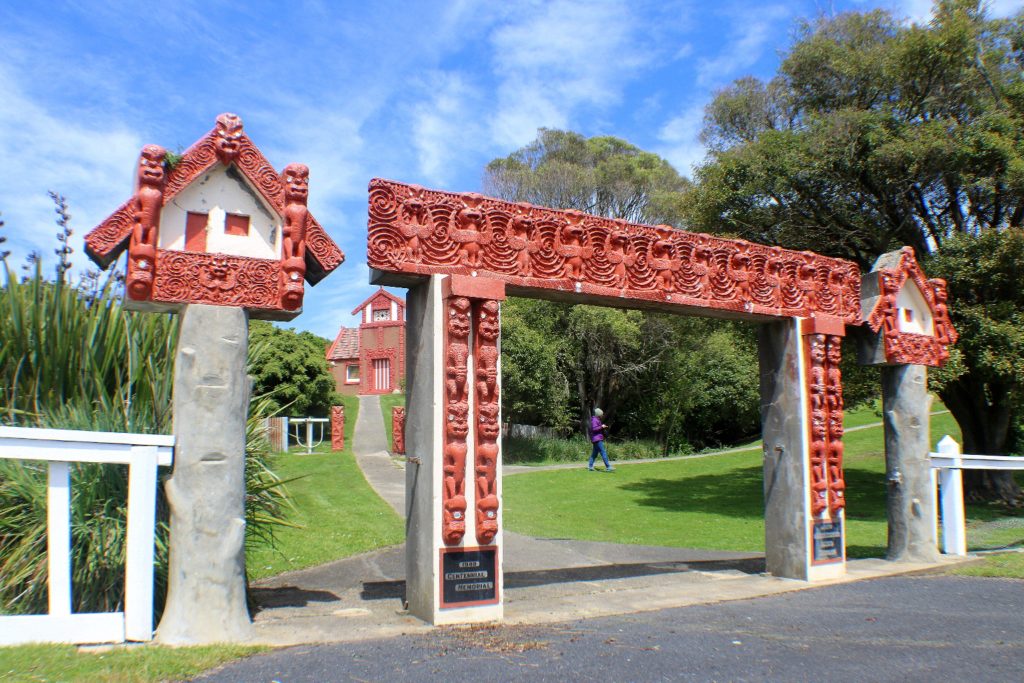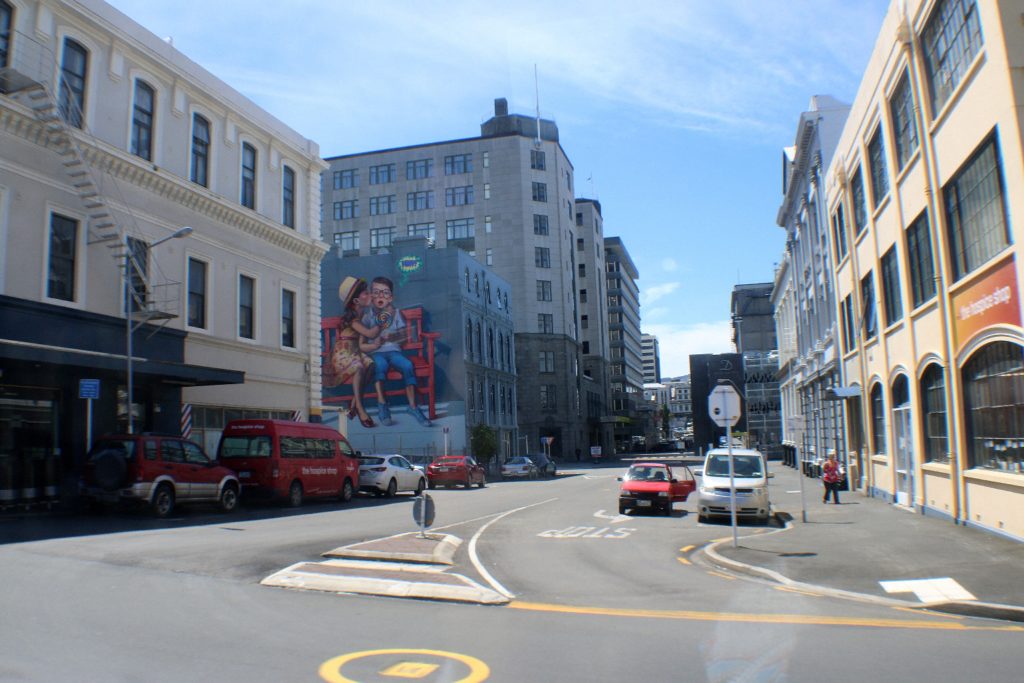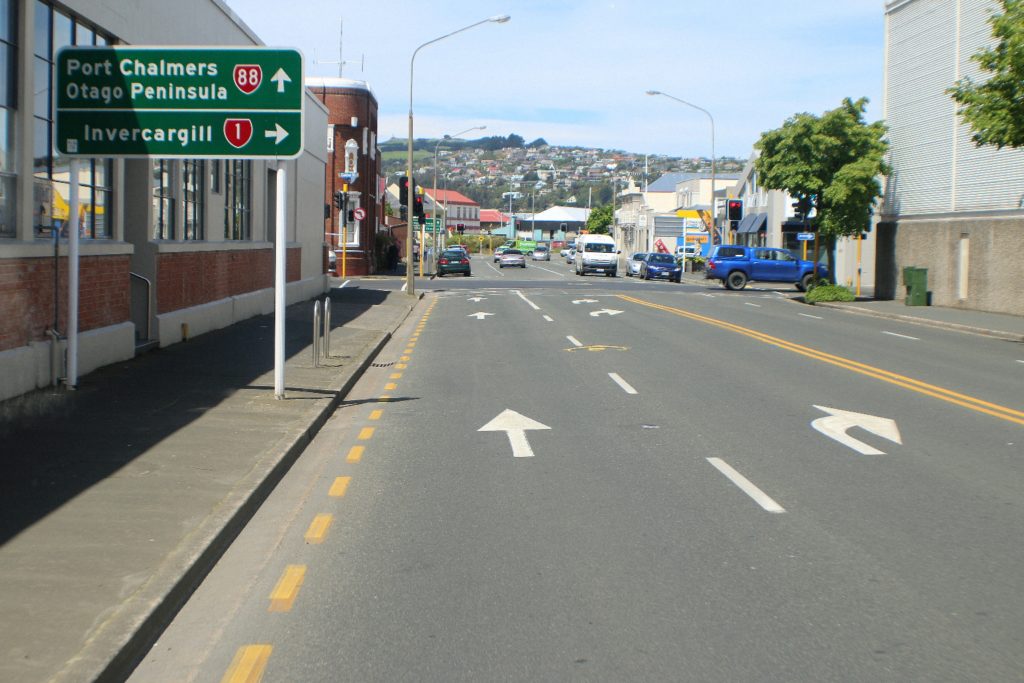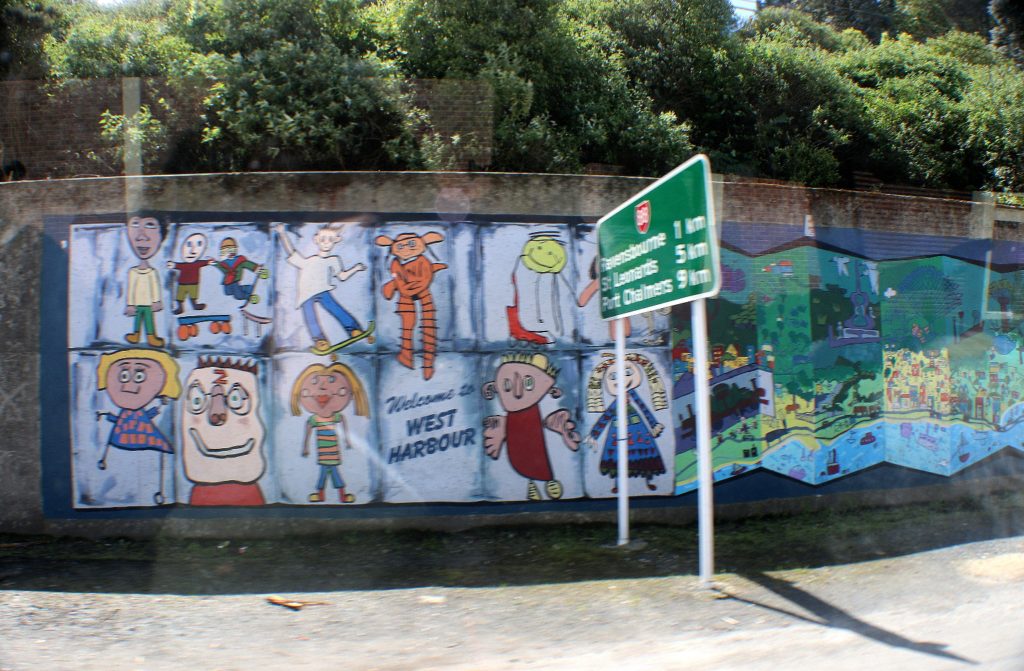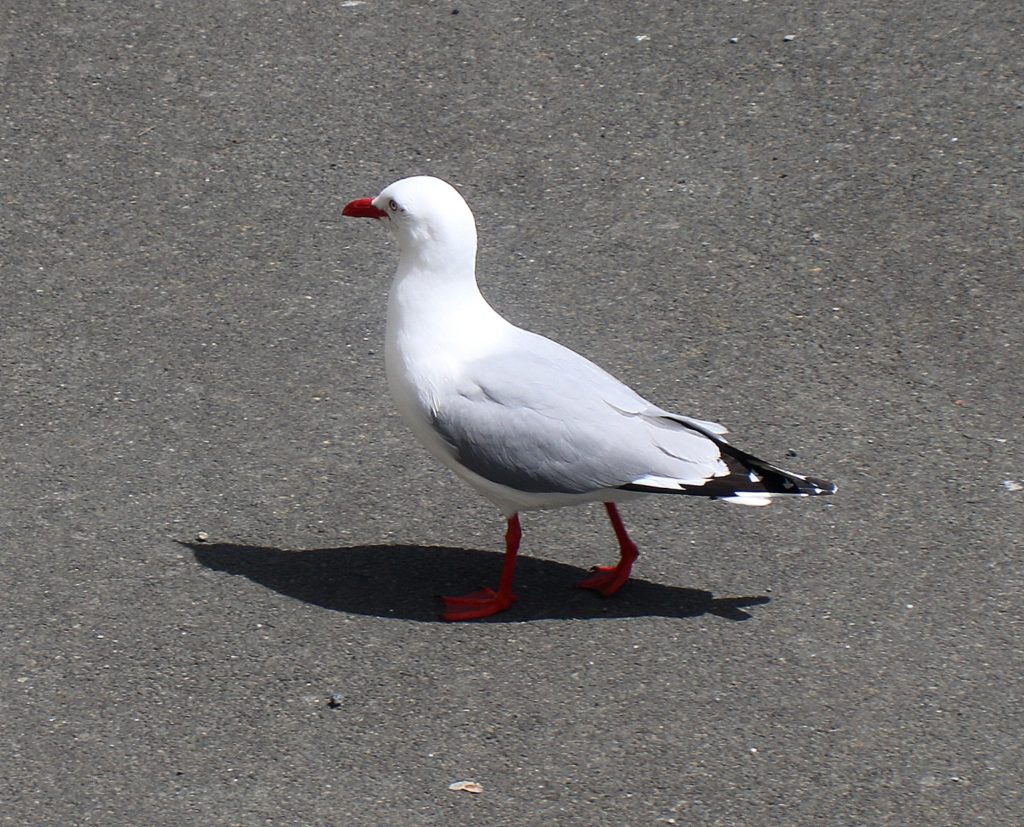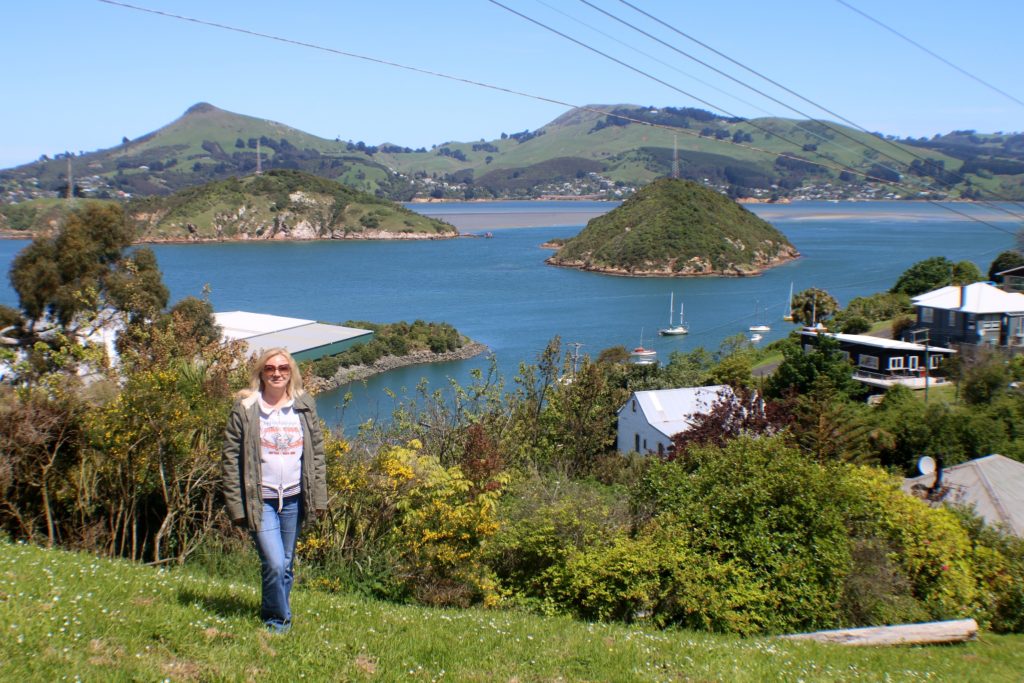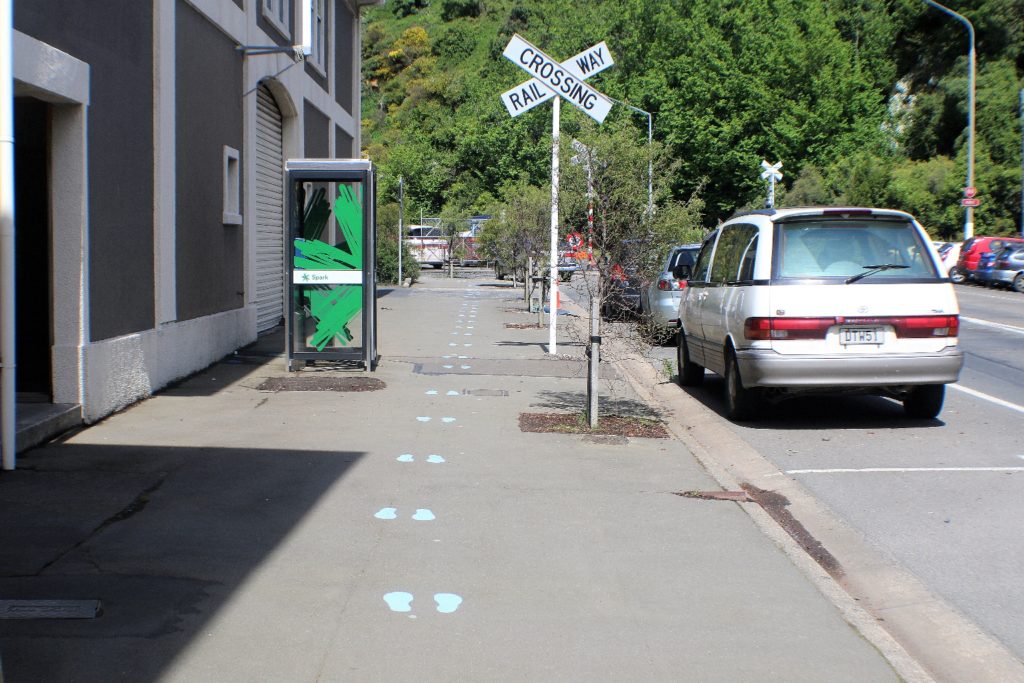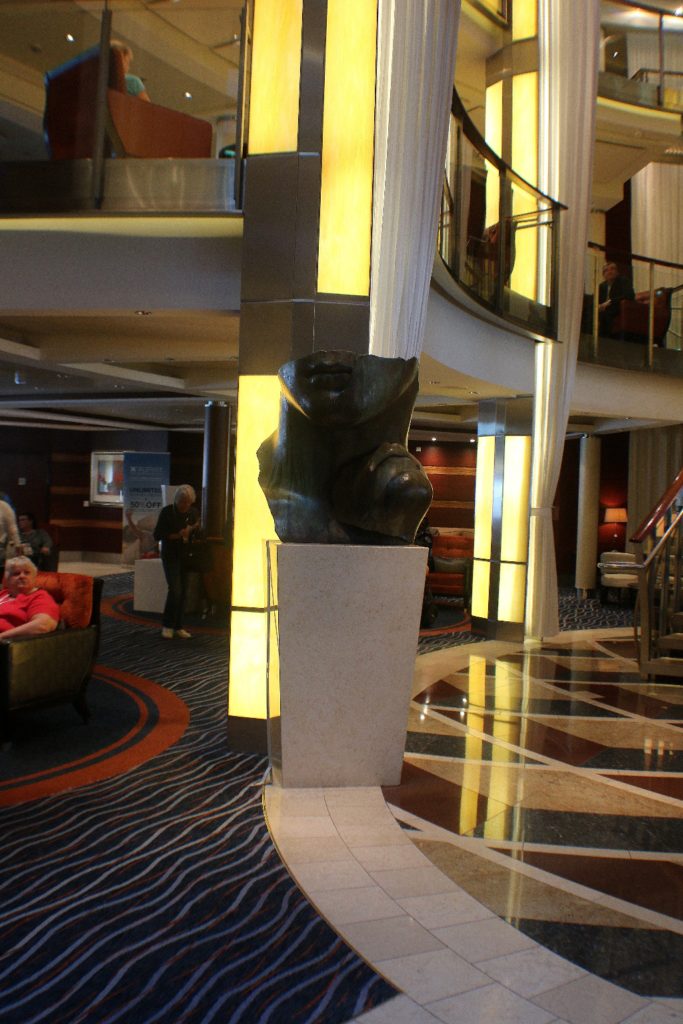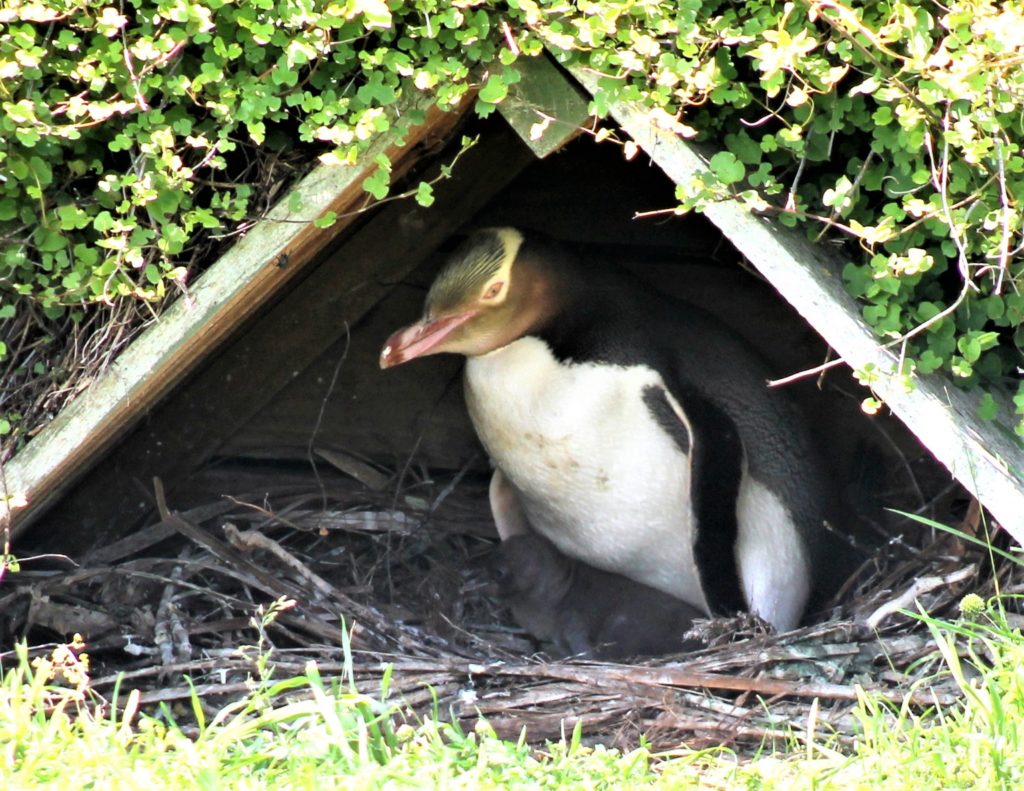
After the wildlife cruise, a bus was waiting to take us to the Penguin Place, where the rare Yellow-Eyed Penguins reside.
Here we just arrived at the Penguin Place Conservation Reserve. Our penguin tour began with a short introduction outlining the issues Yellow-Eyed Penguins are facing, their lifecycle and how the Penguin Place Conservation project is carried out. We learned that the conservation & volunteer work are in place to ensure the survival of this special species; part of our ticket cost goes directly back into helping continue these efforts on in to the future.
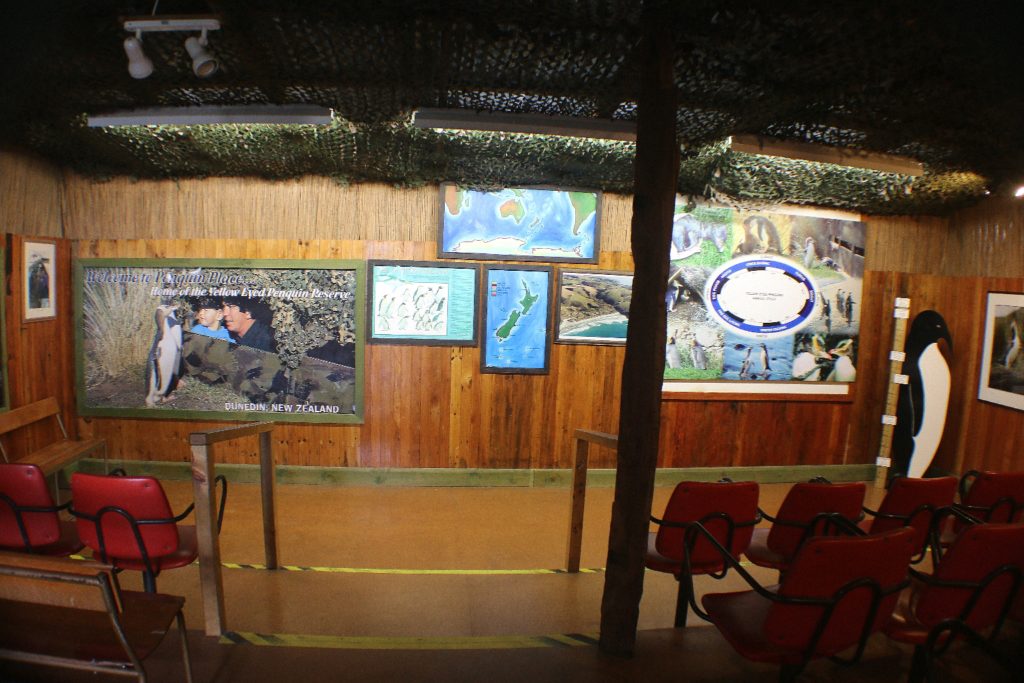
A short bus ride over through a farm took our group to the reserve, where our guide led us on foot through unique covered trenches into viewing hides. These hides allow access to the penguin’s living areas with minimal disturbance letting us view the most endangered penguin in the world.
We covered about 1 kilometer of walking and there were 100 stairs involved during our 90-minute guided walking tour.
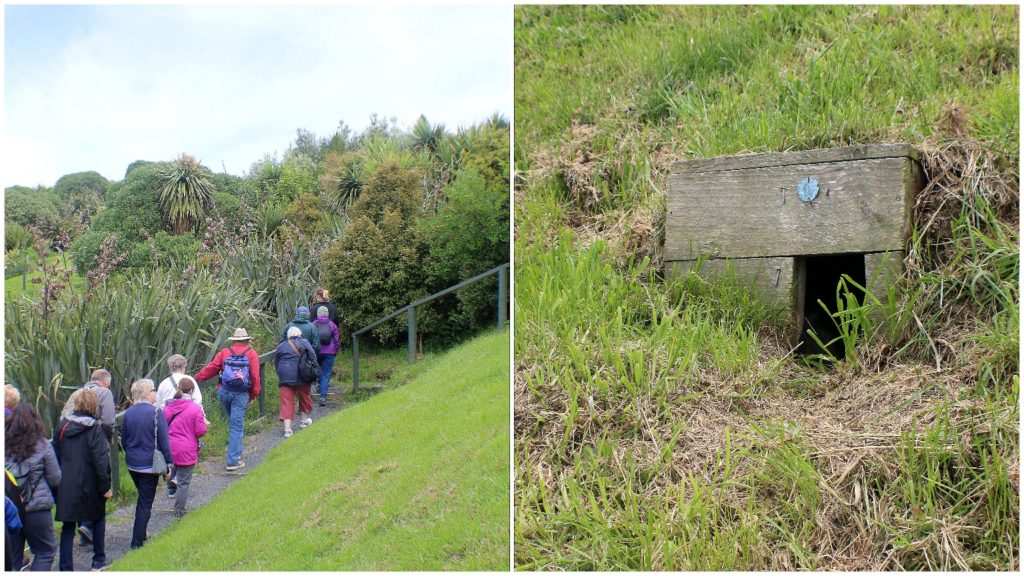
Overlooking the Penguin Conservation Reserve.
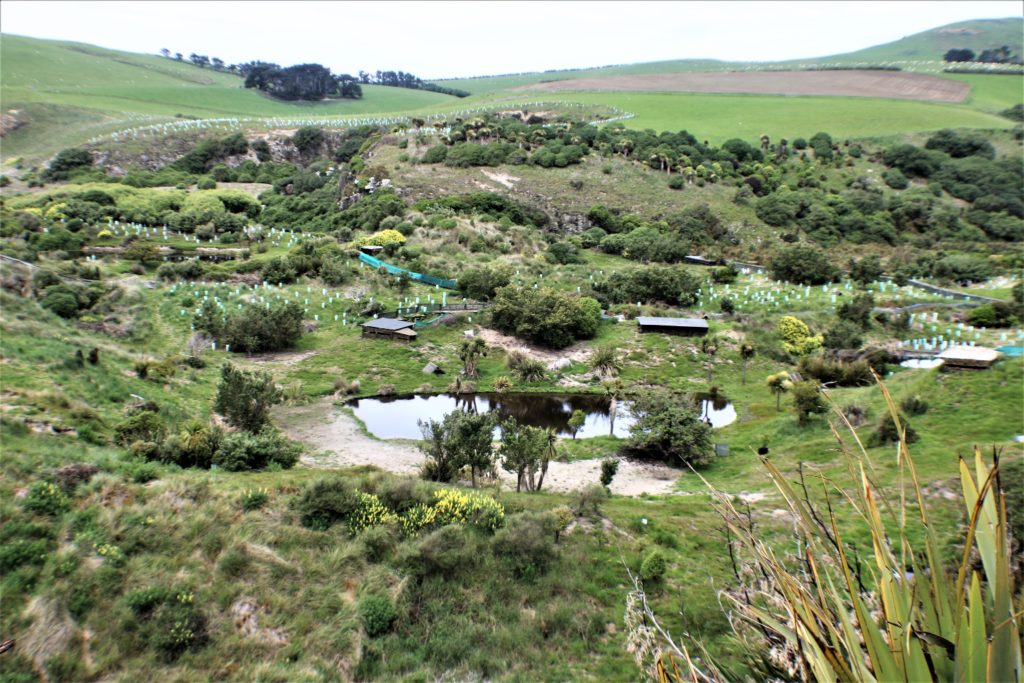
Passing this beautiful bay, to view the seals.
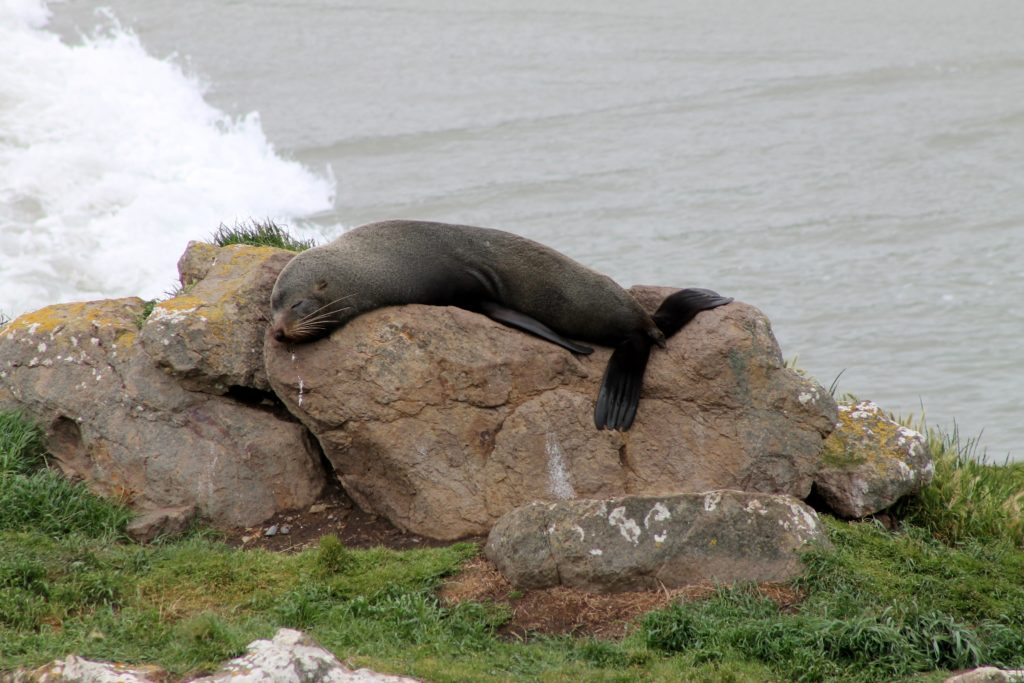
Conversing or meditating?
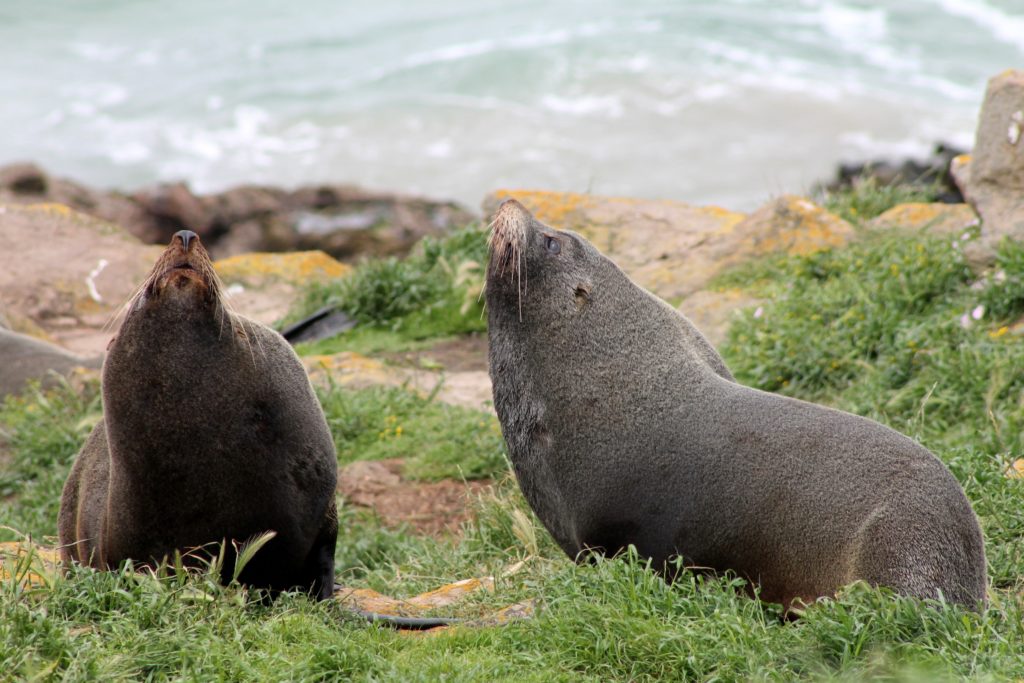
More fur seals in the background.
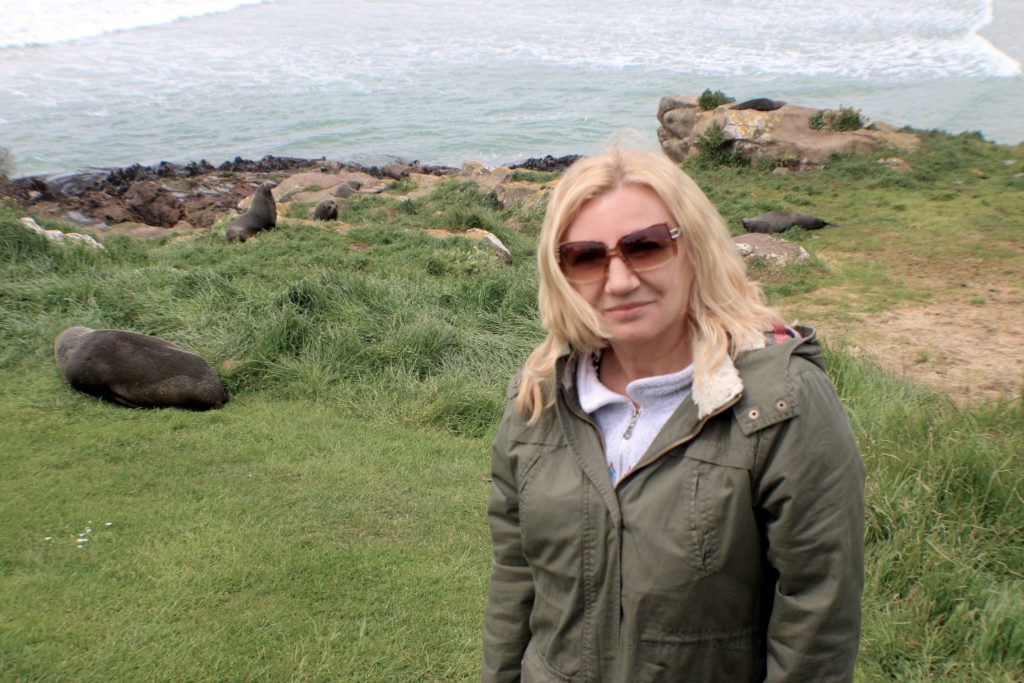
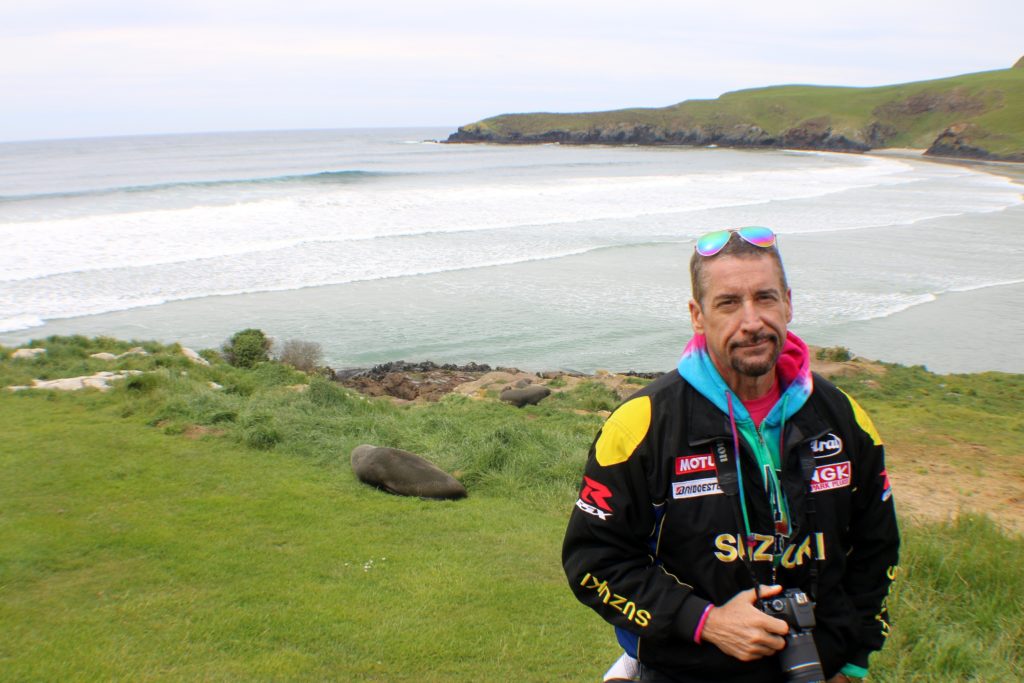
The Yellow Eyed Penguin gets its name from its distinct yellow head band and yellow iris. The Yellow Eyed Penguin is only found on the Eastern and Southern coasts of New Zealand’s South Island.
We had a chance to see a yellow-eyed penguin (world’s rarest penguin) in its natural environment. The little chick is such a cutie.
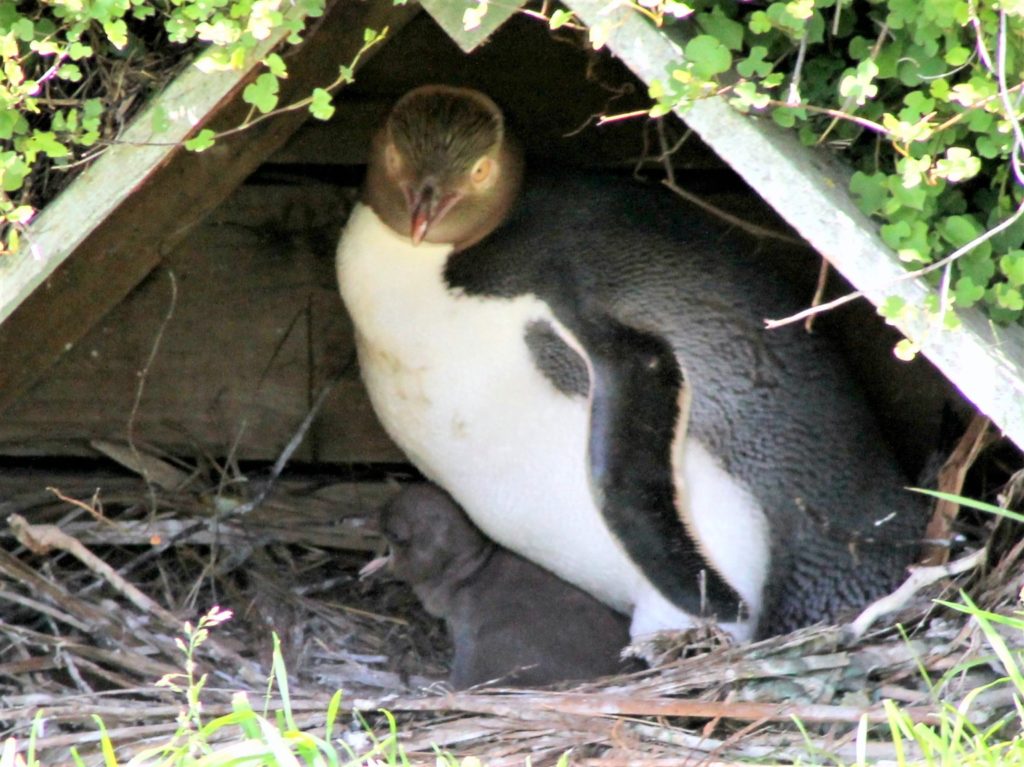
On our way back to Dunedin city center we drove through the Otago Harbor’s beautiful bays, hills and farmland.
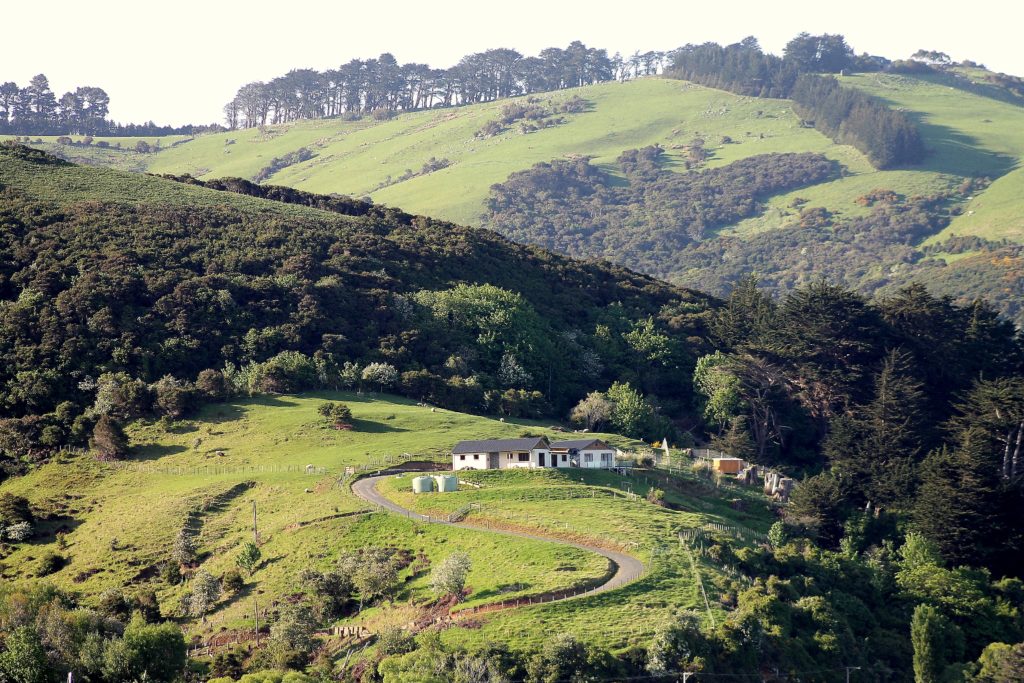
We stopped for a few minutes at the Maori reserve on our way to Dunedin city center.
Located on the Otago Peninsula on the eastern seaboard of New Zealand’s South Island, Dunedin is a thriving city of 125,000 with obvious links to Scotland in terms of history and architecture. In fact, the name means “Edinburgh” in Scottish Gaelic.
The foundations of New Zealand’s richest architectural heritage were built on the gold rushes of the 1860s, and today Victorian and Edwardian buildings can still be seen at every turn. The Octagon, with its many bars and cafés, is a well-known meeting place in the city center.
Here we are driving through the Octagon. The famous Dunedin Railway Station is in the middle of the picture.
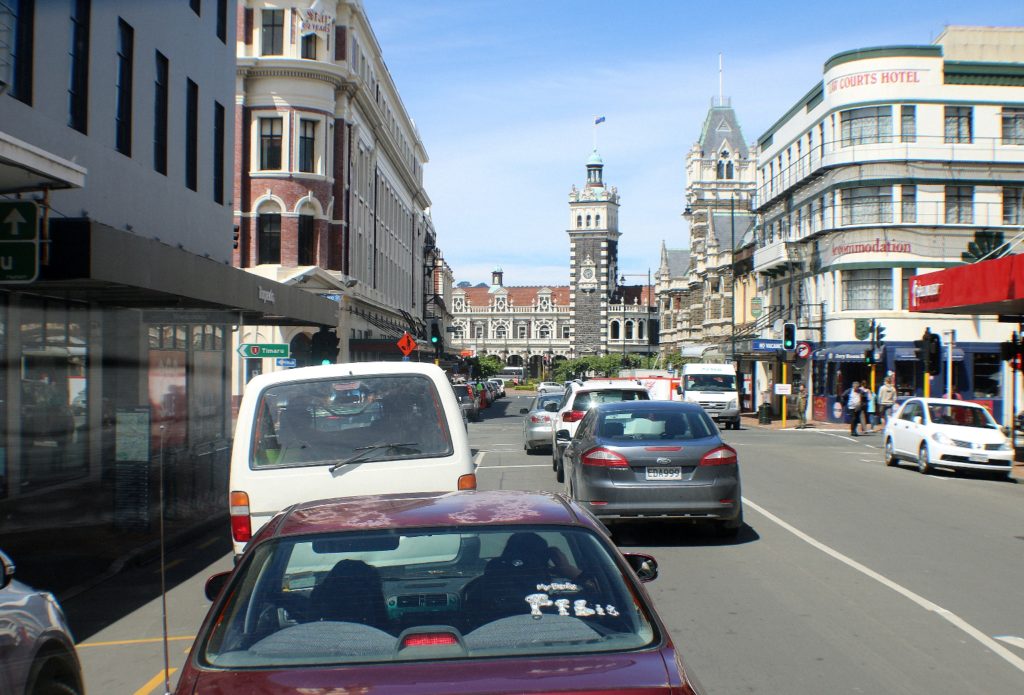
Driving through the streets of Dunedin.
The bus is almost empty. Most of the people got out there, in the city center, but Dave and I decided to explore Port Chalmers instead.
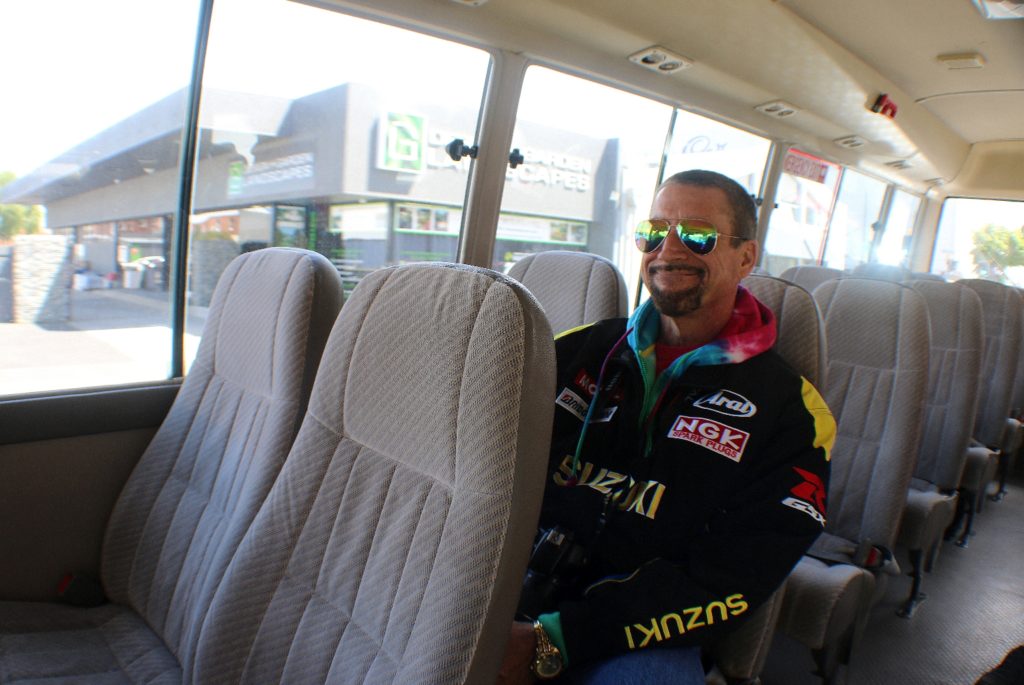
Heading to Port Chalmers, where our ship was docked.
Cute graffiti on our way to the port.
What a view! New Zealand is a gorgeous and unique part of the world. Our bus took scenic roads along the beautiful Otago Peninsula.
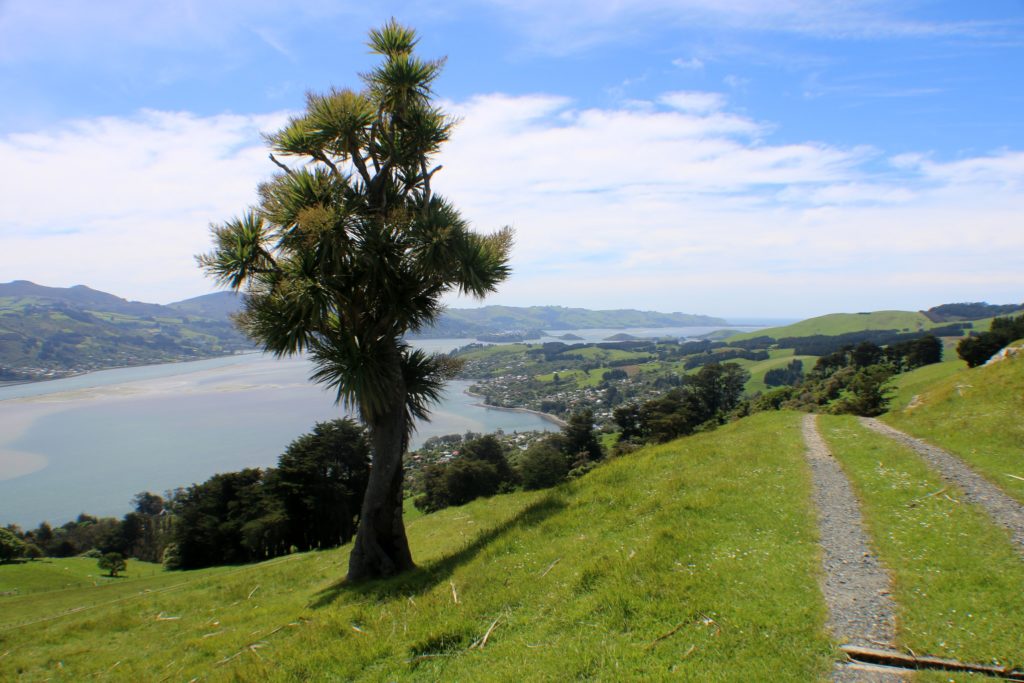
Many pictures were taken from the van windows, which still look great because of the beautiful surroundings.
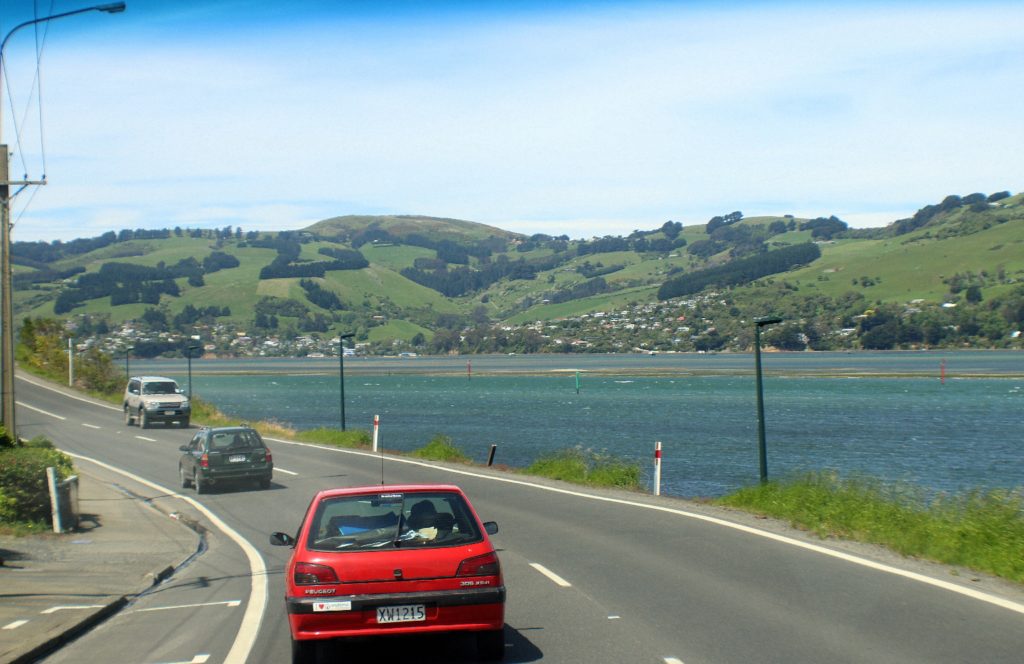
We had done some walking exploring Port Chalmers. Thomas Chalmers was one of the leaders of the Free Church of Scotland, sponsor of the New Edinburgh Scheme responsible for the European settlement of Otago in 1848. By 1861, the town’s population was only 130, but with the Otago Gold Rush five years later the population spurted to 2,000. Today, the port employs far fewer people than it did when it had dry docks, but it handles a bit over 100,000 containers annually and regularly sees cruise ships.
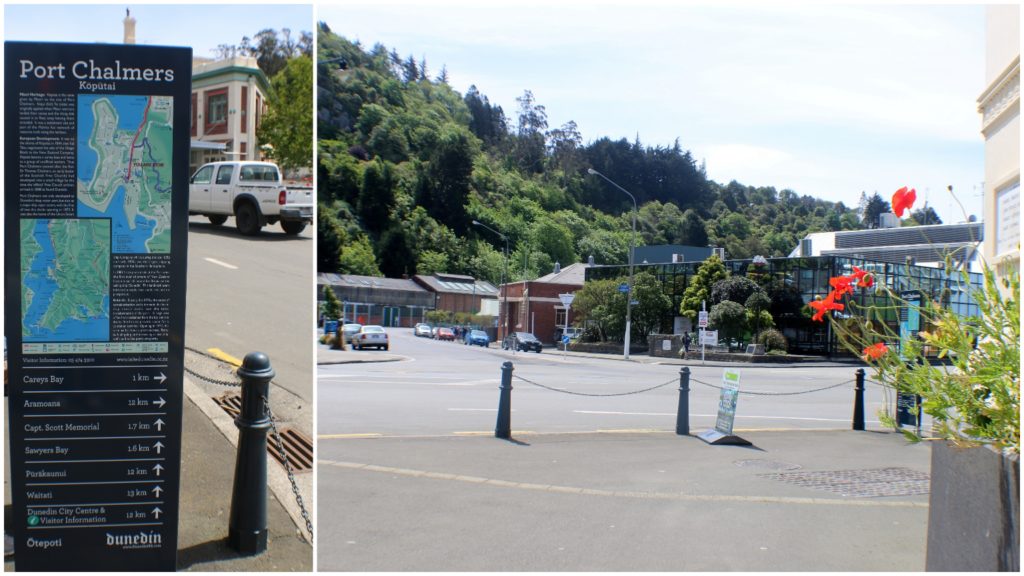
We met a Red-Billed Gull on the streets of Port Chalmers.
Then, we took a trail to the lookout overlooking the deep-water harbor of Port Chalmers. It was from here in 1844 that the colonization of Otago first began; and also from here that Scott, Shackleton, and Byrd set out on their Antarctic expeditions.
The Port Chalmers Flagstaff on the Aurora Terrace Lookout was once a signal station, keeping watch on shipping traffic in Otago Harbor.
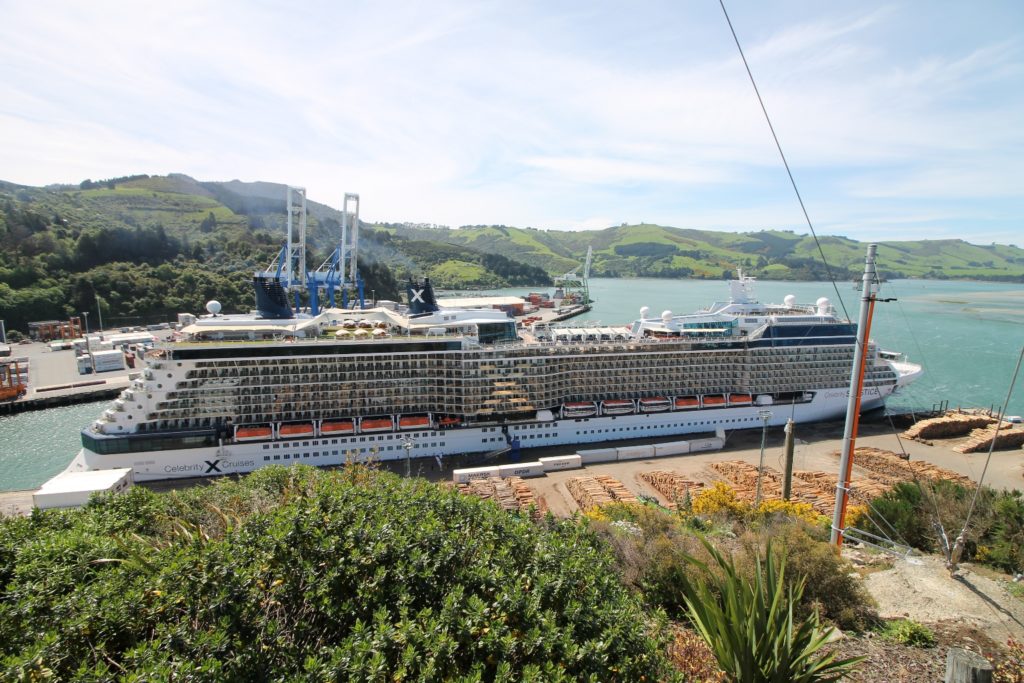
At the top end of Aurora Terrace, which is accessed from Constitution Street, there is Otago Harbour Orientation Table. This orientation table shows various shipwrecks, places of history, important land features, and the location of maritime hazards of the Otego Harbor.
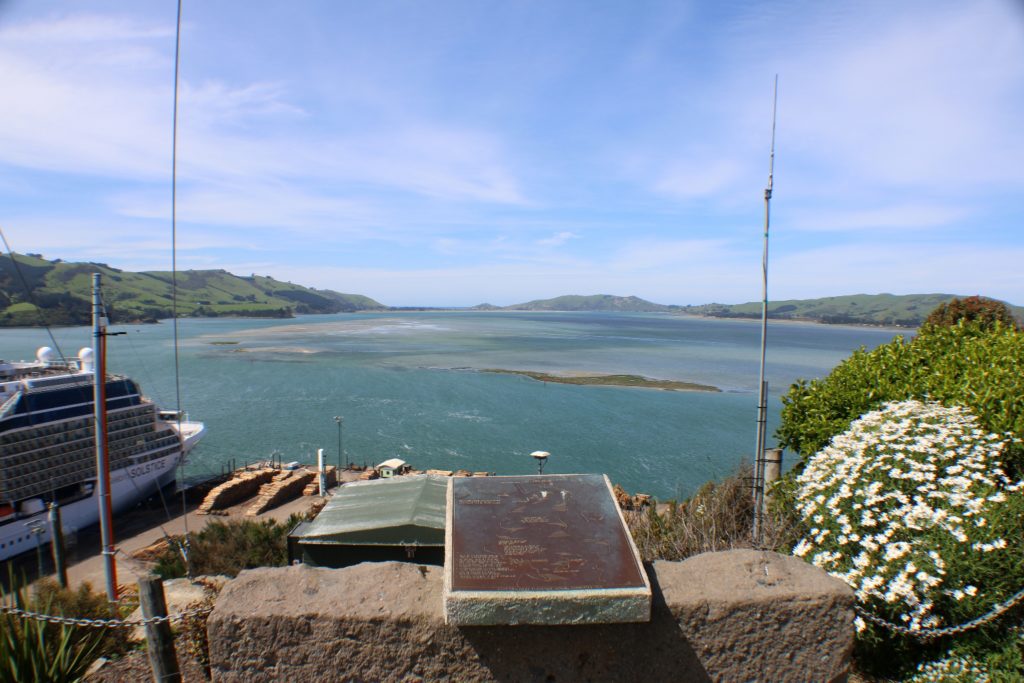
Walking up to the Otago Peninsula overlook. So beautiful!
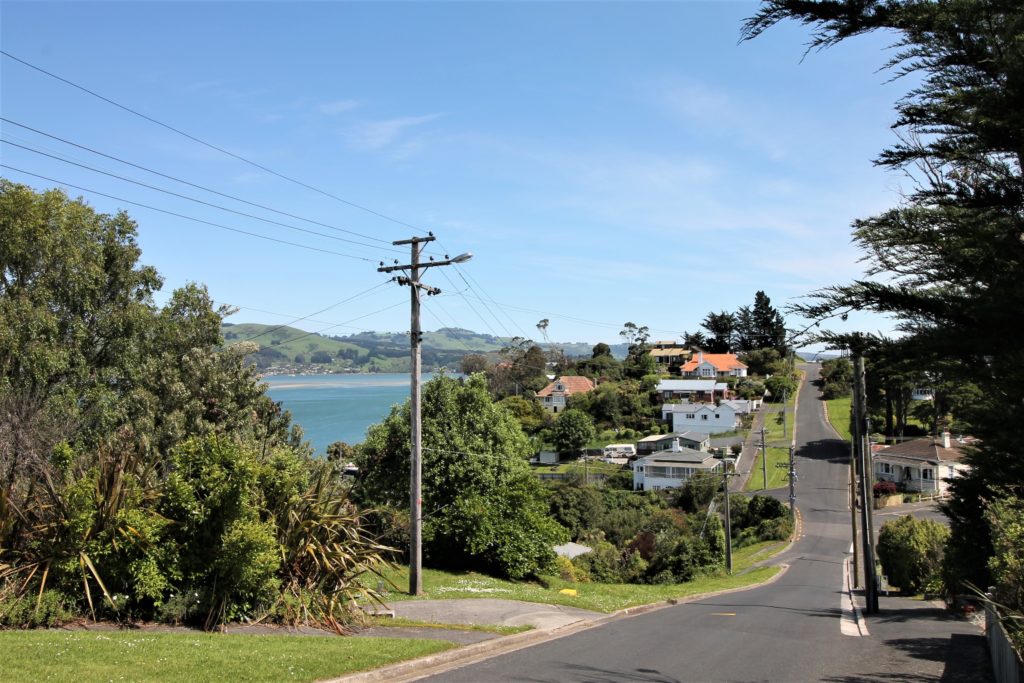
Looking across Port Chalmers and the Otago Harbour to the Otago Peninsula, which is renowned for hosting the world’s only mainland breeding colony of northern royal albatross and various other unique species.
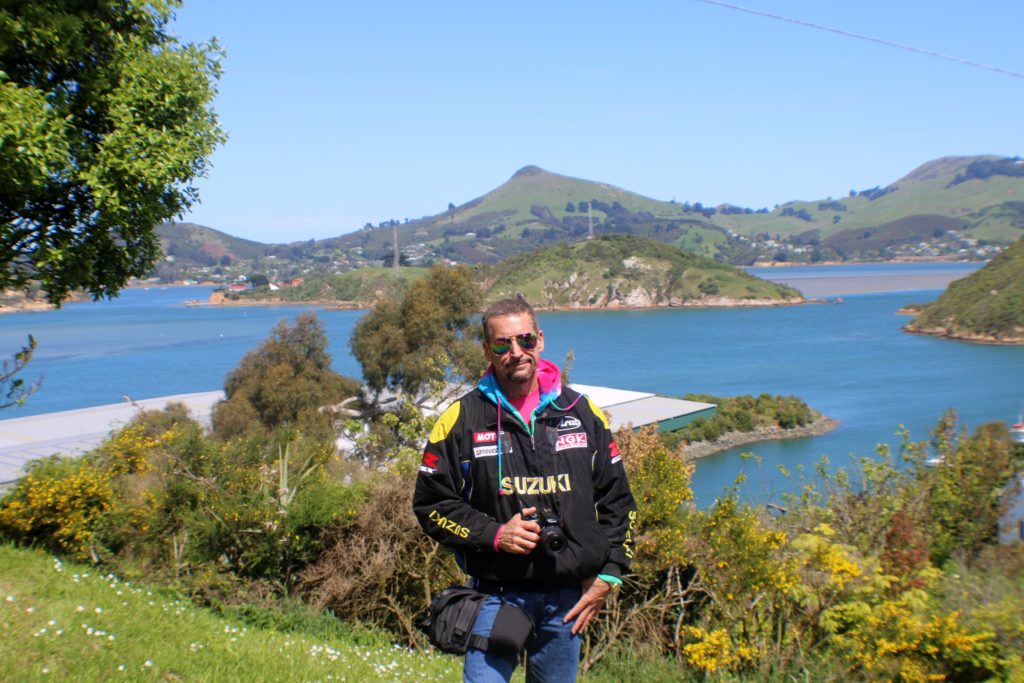
Back to the ship by following the footprints on a sidewalk. What a cute idea!
We still had a couple of hours to enjoy the view from the cruise ship.
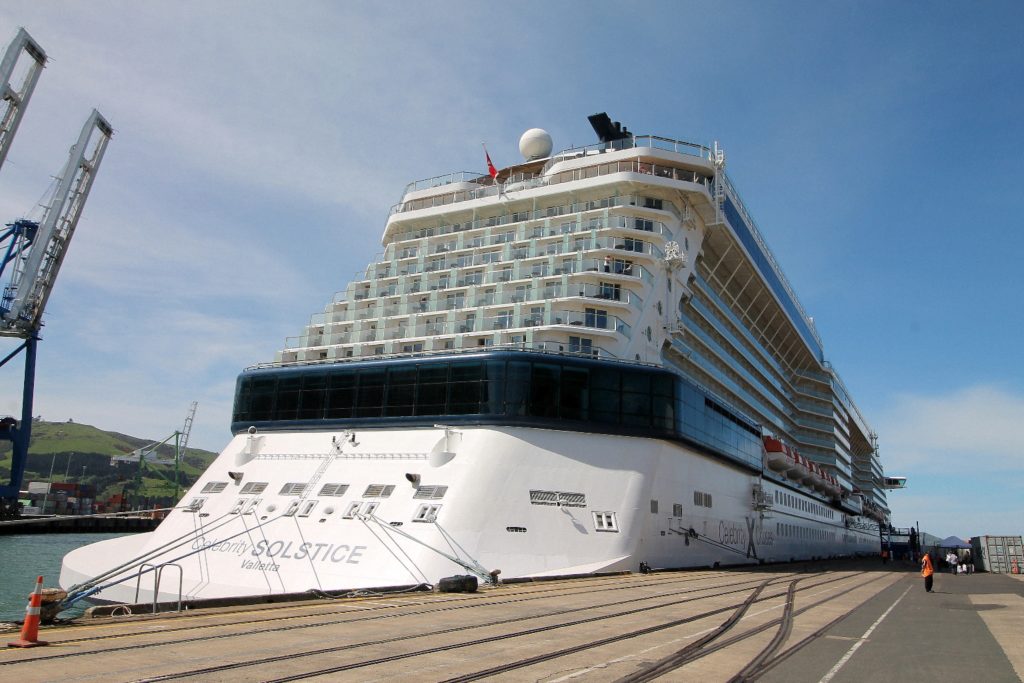
The view from the ship was amazing.
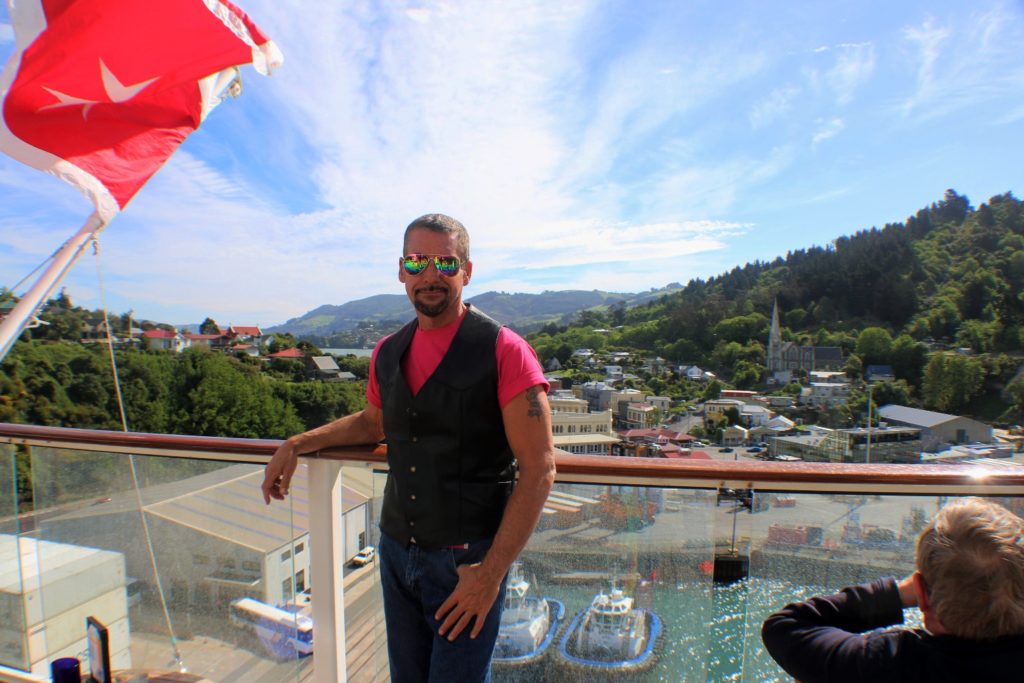
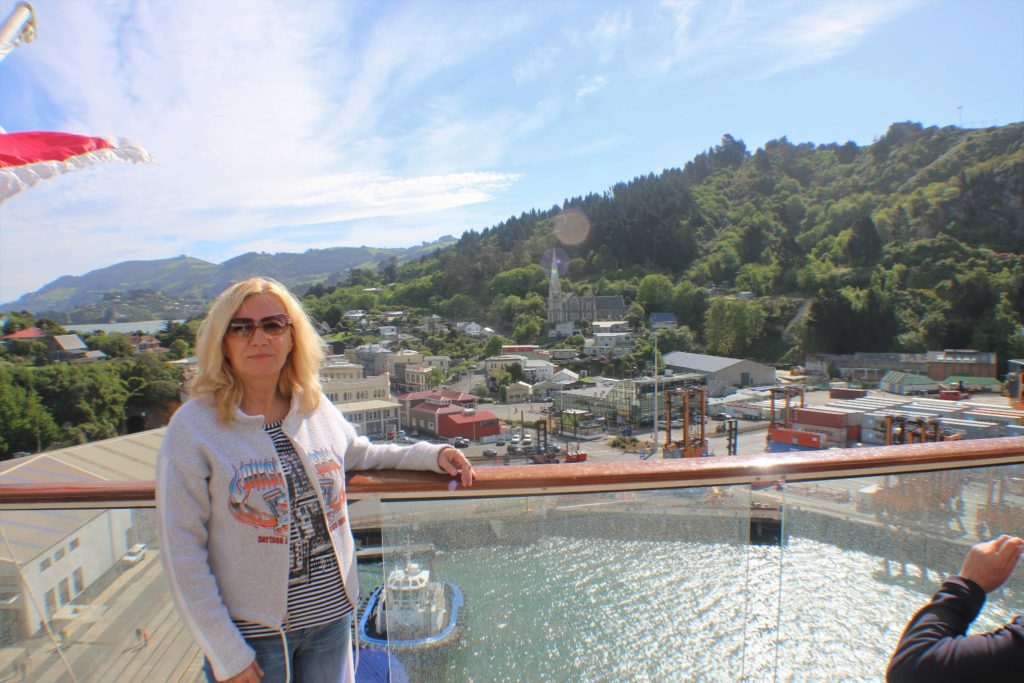
This is the historic Iona Church, which occupies a very prominent position. The church was built between 1871 and 1883 with the town clock installed in the church tower by Little John & Co of Wellington in 1885. Neat photo opportunity.
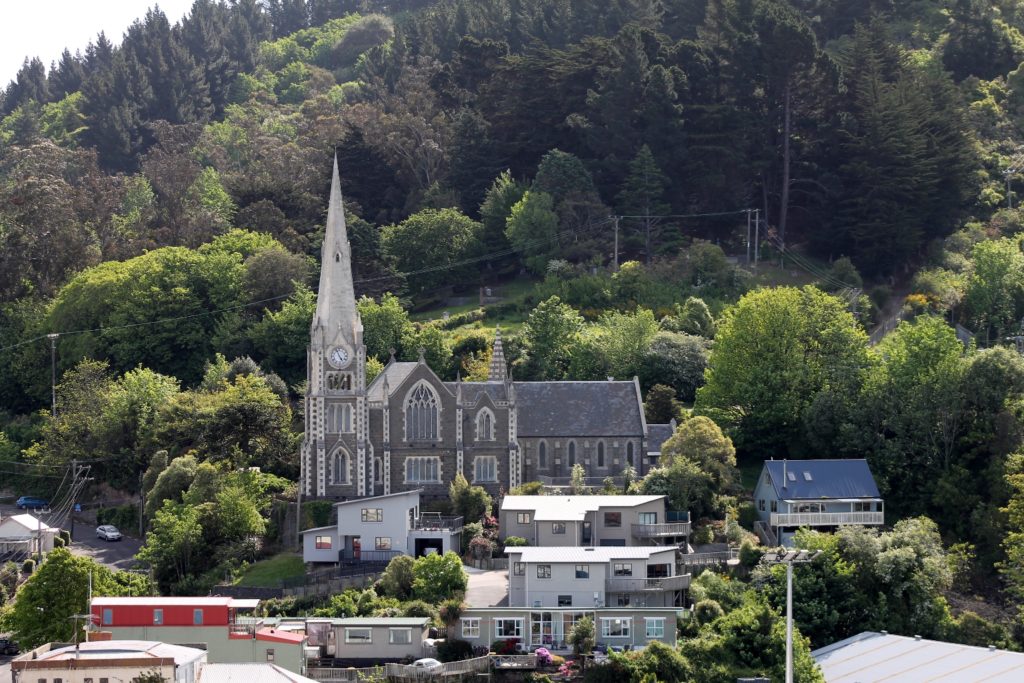
The beautiful views of the harbor.
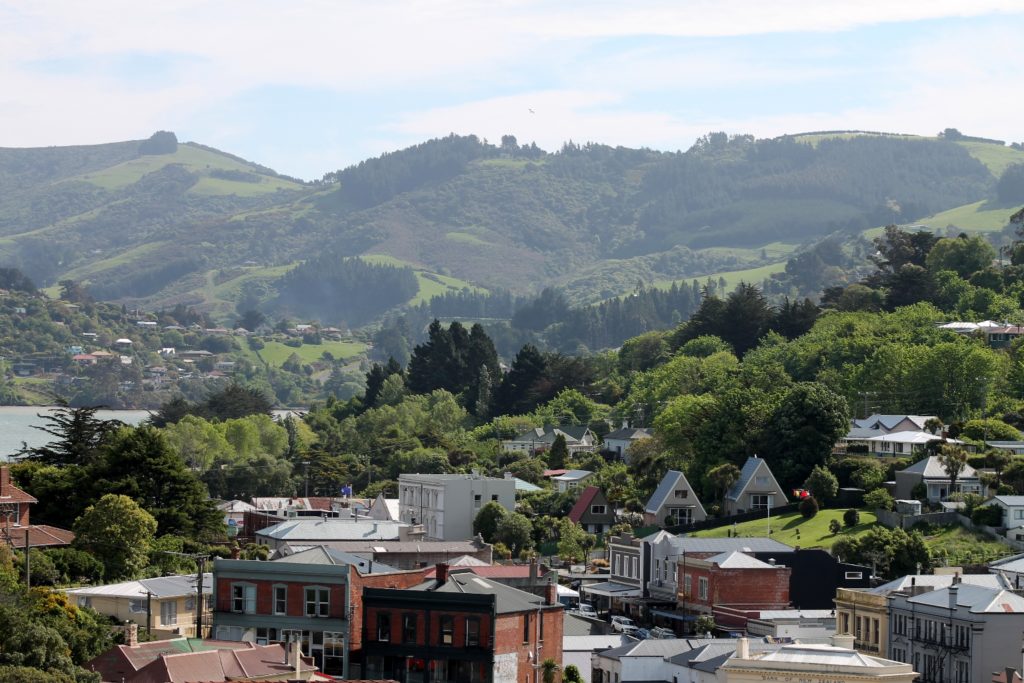
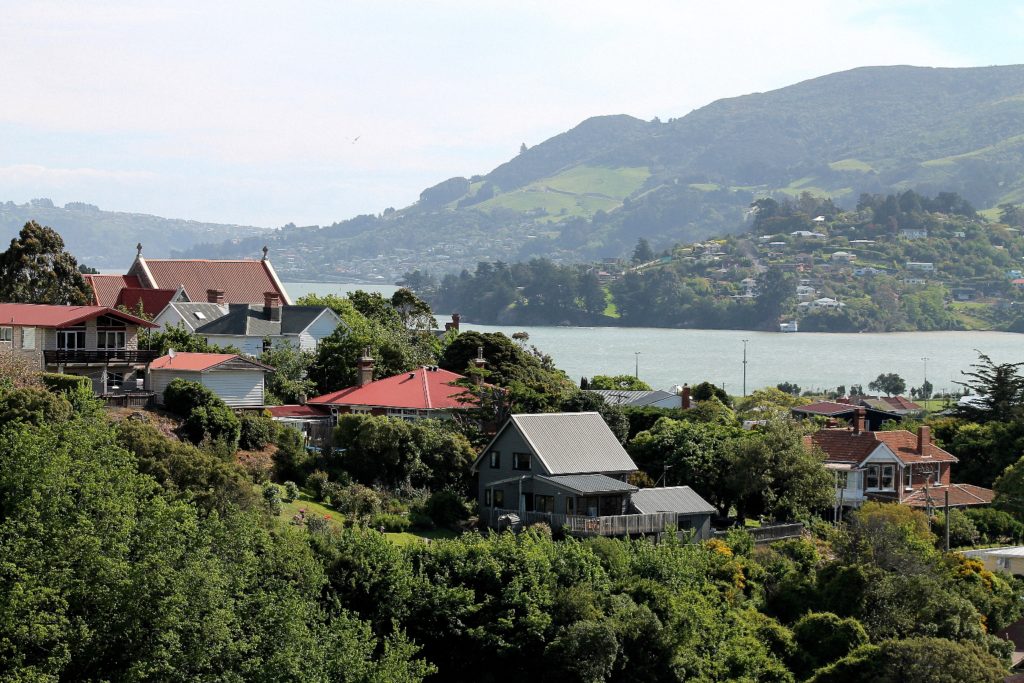
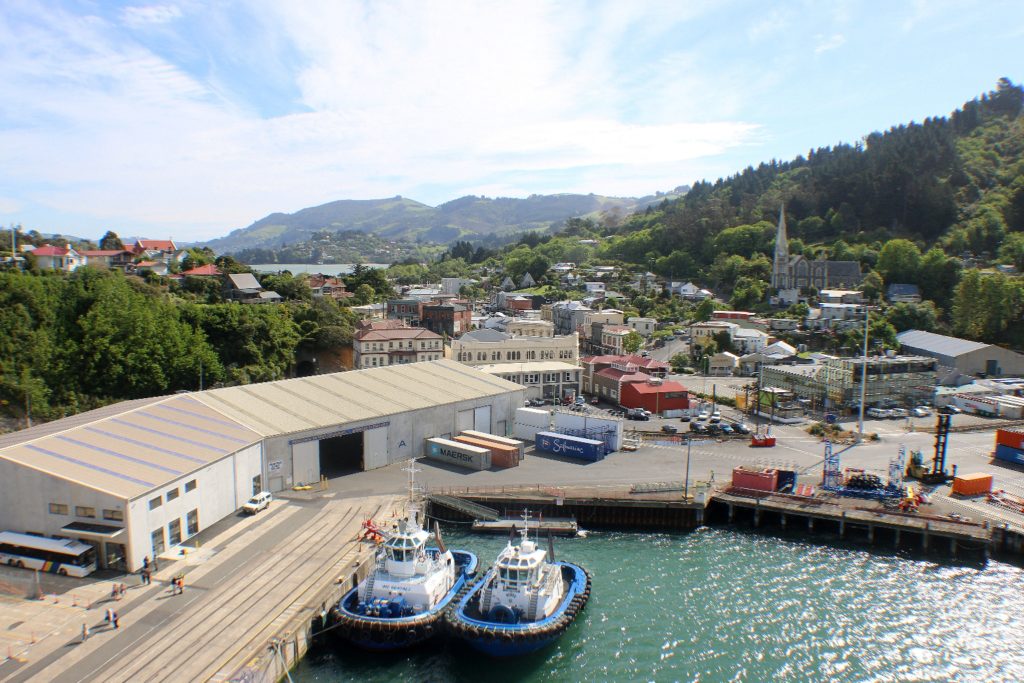
It was diner time. Usually crowded, the pool deck looked lonely. It seems like everyone went to dinner or was hanging out in the sunset bar on the upper deck, so there were only a few people in the pool area.
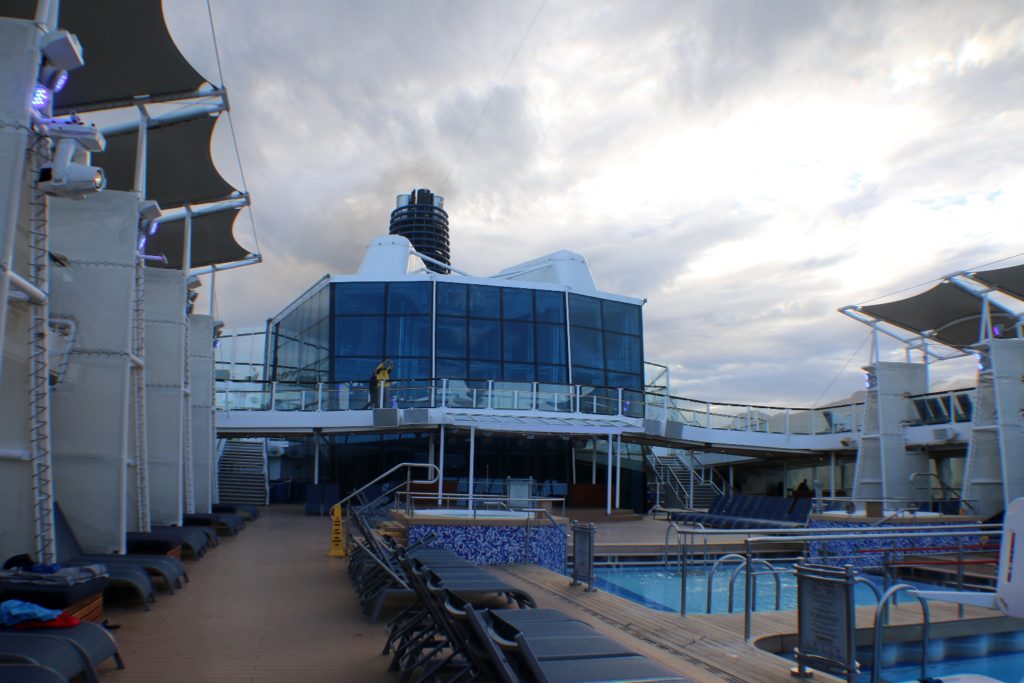
While walking to the restaurant, we noticed an interesting piece of a half-faced art sculpture. We walked through this deck several times already, but only now started noticing more things. It is a large ship. 🙂
Dress Night on the ship. Here are some photos of us from this wonderful evening.
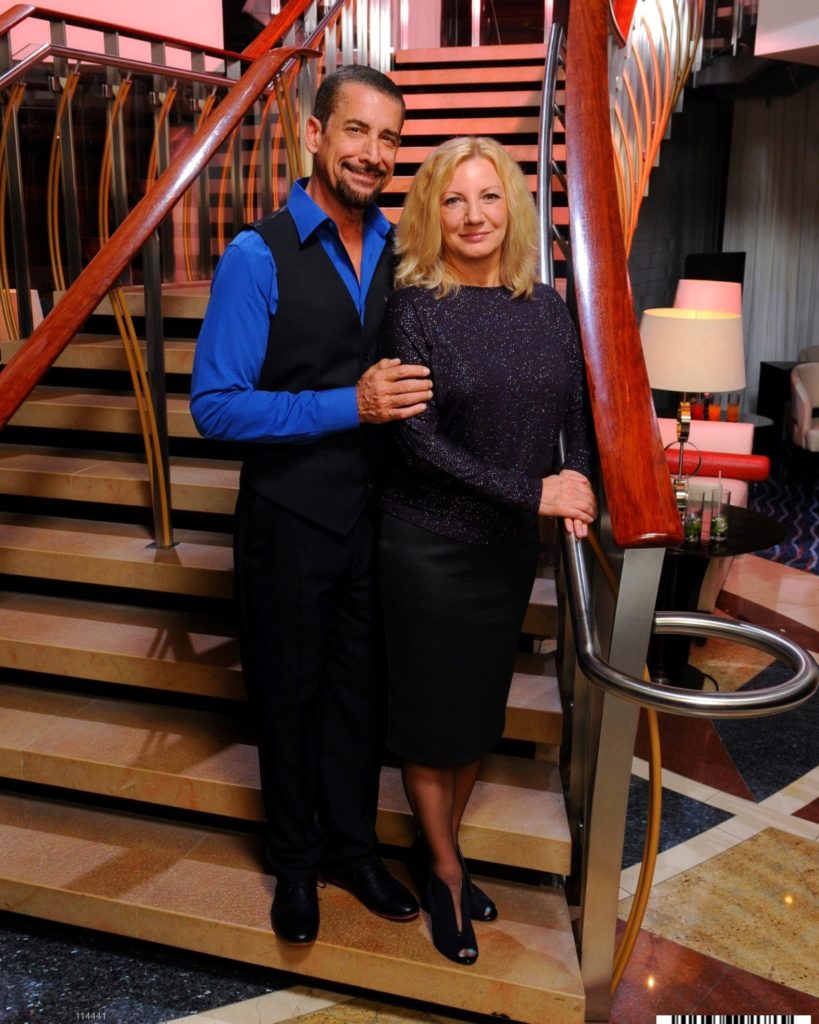
Dave is such a handsome man!
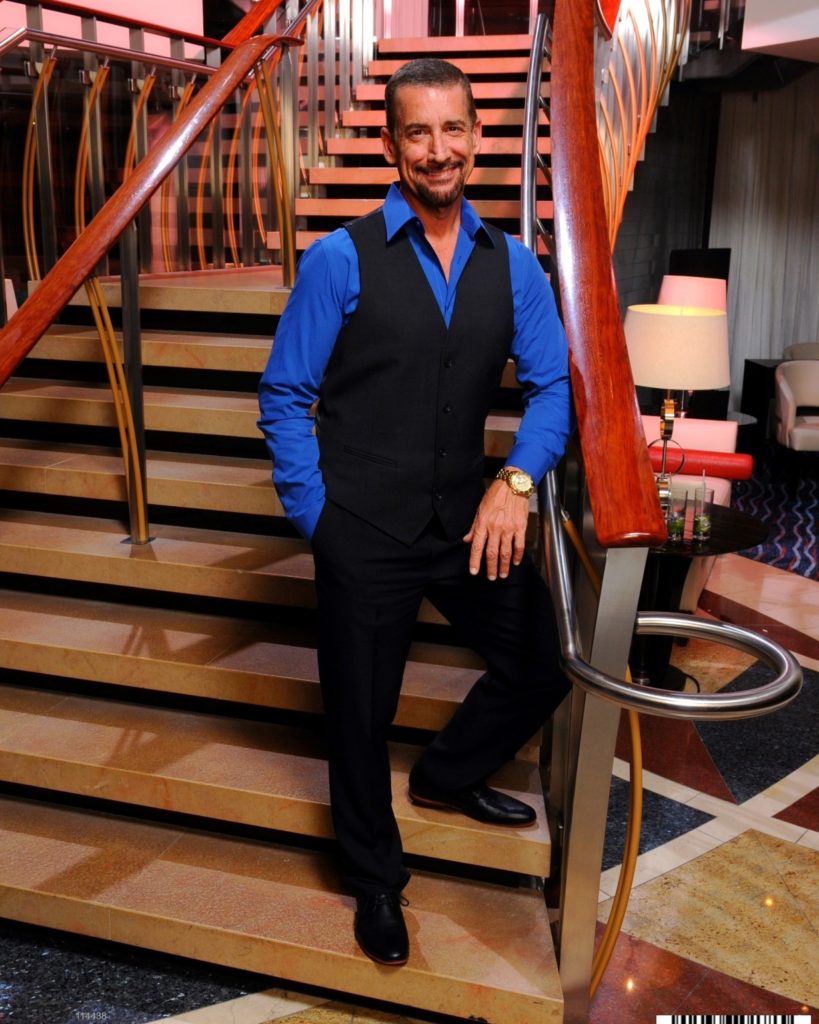
With the actual ship interior as a background.
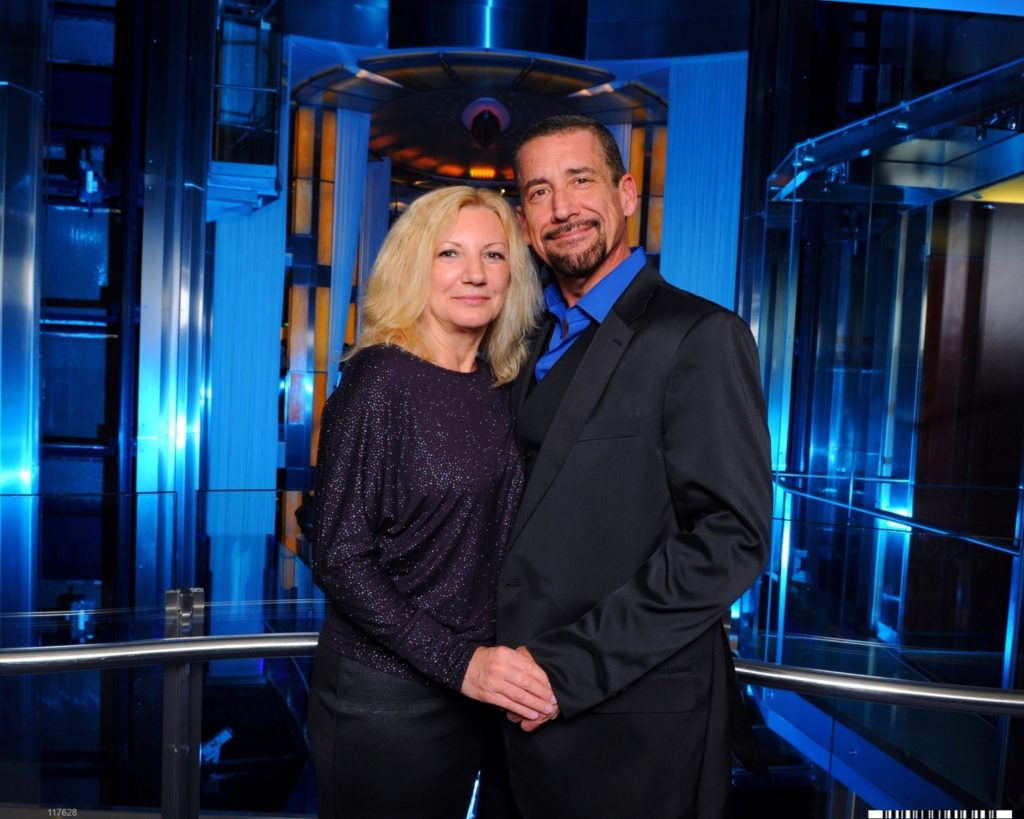
With Sydney Harbor Bridge picture as a background.
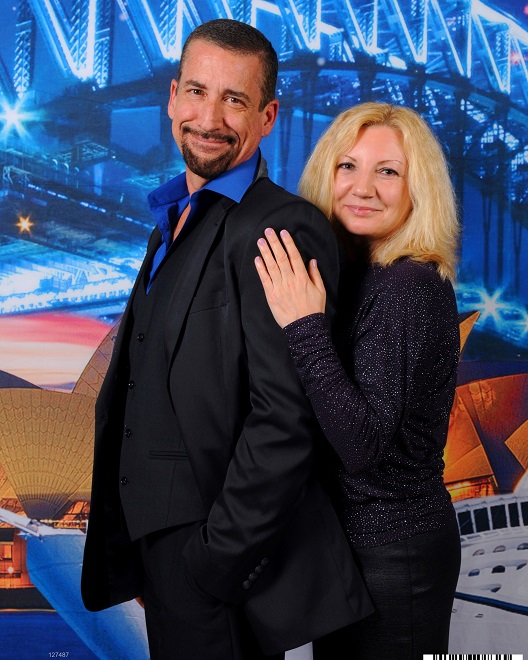
At the restaurant. We collected quite a few pictures from numerous dinners on the ship. We had a great day in Dunedin and now we were off to the next exciting South Island’s city – Akaroa.
